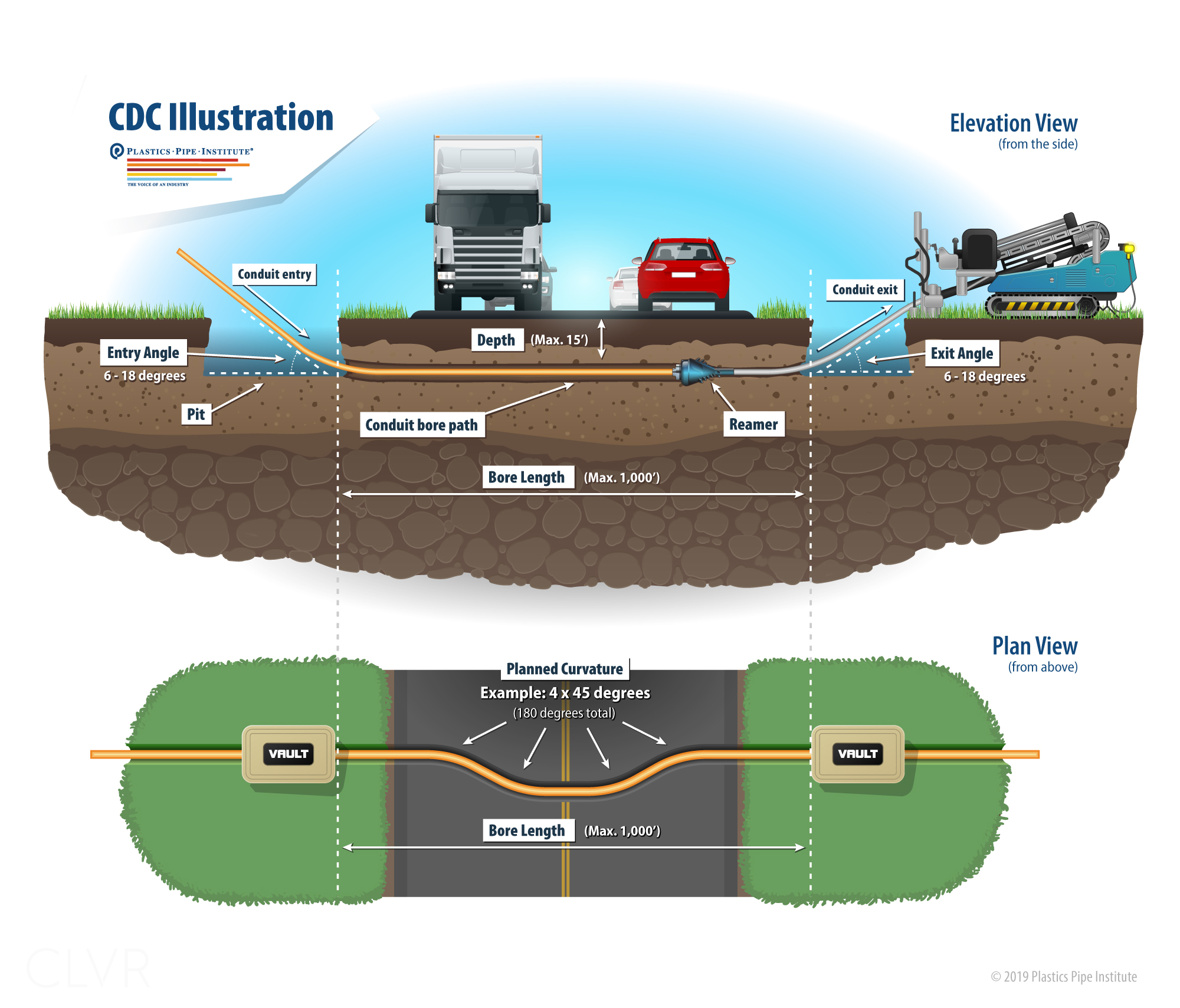The Plastics Pipe Institute, Inc. (PPI), has released a new, free software tool that aids in determining the most appropriate wall thickness of high-density polyethylene (HDPE) conduit to be installed using horizontal directional drilling (HDD) techniques.
Published on PPI’s website at plasticpipe.org/conduitcalc or at www.conduitcalc.com, the Conduit Design Calculator (CDC) simplifies complicated calculations into an easy-to-use online application. This tool is one of several PPI calculators available without charge that are related to the design and installation of plastic piping materials for various applications.
The PPI CDC automates the Mini-HDD calculations pioneered by Dr. Larry Slavin and described in PPI TR-46. It uses inputs such as directional changes in the underground bore path, drill rod diameter, bore depth and length to determine the Calculated Tensile Load on the selected HDPE conduit, as compared to its allowable Safe Pull Strength. The calculator gives users the options of HDPE conduit manufactured from a standard strength HDPE resin or higher strength HDPE resin.
Users can select the conduit diameter and wall thickness type from a menu with three pre-loaded sizing systems (e.g. IPS, SIDR, and True-size). All conduit dimensions and properties are in accordance with industry standards such as ASTM F2160, NEMA TC 7, and UL 651A.
After the inputs are entered, the calculator shows the Safety Factor for the selected wall type, and potential alternatives, in a Results Table. A Safety Factor greater than 1.0 indicates that the displayed wall thickness types will have sufficient tensile strength to meet the calculated tensile forces for the given installation. In some situations, more than one wall type will have sufficient tensile strength, and the user can select the wall type based on those results, and other factors.
“As long as the jobsite conditions are known, the calculation for a given installation can be completed in 2-3 minutes, for most projects”, explained Lance MacNevin, P. Eng. of PPI, one of the project leaders.
According to Patrick Vibien, P.Eng., director of engineering for PPI’s Power & Communications Division (PCD), “Output can be emailed directly from the Calculator, saved as a PDF file, or printed as a paper file to simplify sharing and record keeping. We are very pleased to be able to bring another helpful tool to the industry.”
High-density polyethylene or HDPE conduit, also known as PE conduit, is the preferred material to house and protect electrical power and communications cables in typical applications such as power utilities, telecommunications, CATV, SCADA, FTTH, ITS, highway lighting, and other underground utilities. Benefits of HDPE conduit, according to PPI, include availability in long lengths without joints, high strength, flexibility, proven reliability and installation toughness. PE conduit is widely used in trenching, horizontal directional drilling (HDD) and plowing installation methods.
Additional information about conduit for Power and Communications can be found online at www.plasticpipe.org/power-comm.
Available free online at PPI’s www.conduitcalc.com, the Conduit Design Calculator (CDC) simplifies complicated calculations into an easy-to-use application to determine the appropriate wall thickness of HDPE conduit to be installed using horizontal directional drilling (HDD) techniques.




